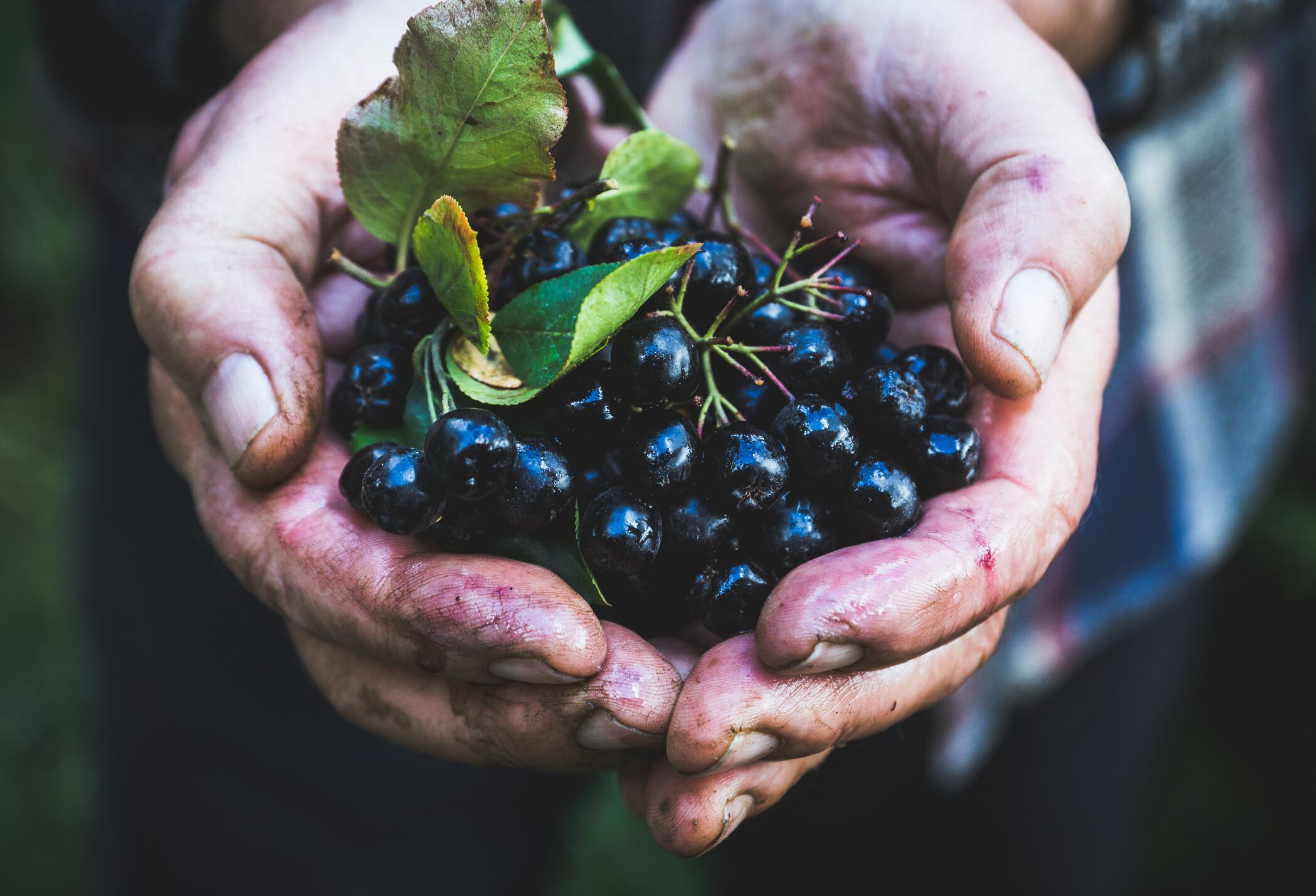Polyphenols present in the superfruit attenuated the negative impacts of a high fat diet (HFD), resulting in reduced overall body, liver, and white adipose tissue weight, and alleviation in dyslipidaemia and hepatic steatosis, according to findings published in Frontiers in Nutrition.
Oral black chokeberry polyphenol (BCP) supplementation prevented gut microbiota dysbiosis by increasing the relative abundance of Bacteroides, Prevotella, Romboutsia, and Akkermansia, while decreasing Desulfavibrio and Clostridium, associated with severe disease and resulting in improved lipid metabolism, the authors wrote.
“BCPs supplementation altered the composition and structure of the gut microbiota, which was significantly associated with lipid metabolism in HFD-induced obese rats.”
“Our findings provide evidence supporting the beneficial effects of BCPs intake on ameliorating functional disorders related to obesity and lipid metabolism.”
Aronia
Aronia is a member of the Rosaceae family native to eastern North America. It has also been naturalized in Europe.
The most studied form of chokeberry is Aronia melanocarpa (black chokeberries), but other forms of the berry exits, including Aronia arbutifolia (red chokeberries) and Aronia prunifolia (purple chokeberries).
Although originating in North America, commercial growing of aronia berries started in the Soviet Union and Eastern Europe. The berry was reportedly used for enhancing the diets of Russian cosmonauts.
The majority of the science supporting the potential health benefits of chokeberry relate to heart health (enhancing blood flow, normalizing blood clots, benefiting blood pressure), but other reported benefits include anti-inflammatory effects, antioxidant activity, and immunomodulatory effects. A study from the International Journal of Sport Nutrition and Exercise Metabolism also indicated potential for sports nutrition (2005, Vol. 15, pp. 48-58).
Microbial diversity
Scientists from Beijing Forestry University (China) and the University of Illinois at Urbana-Champaign (USA) investigated the relationship between BCP treatment on the structure of gut microbiota, lipid metabolism, and associated mechanisms in HFD-induced obese rats.
The gut microbiome is an important regulator of host metabolism and any changes to the bacterial composition can increase disease vulnerability.
Obesity and associated metabolic disorders are known to reduce intestinal microbial richness and diversity, while high-fat diets increase the abundance of Firmicutes or ratio of Firmicutes to Bacteroidetes (F/B ratio), indicative of gut dysbiosis, metabolic disorders and related chronic disease.
However, BCP treatment changed the negative trends associated with HFD and reduced both the F/B ratio and quantity of pathogenic bacteria, while promoting beneficial variants that improve disease outcomes and lipid metabolism.
The authors wrote: “Alterations in the gut microbiota, especially the relative abundance of Bacteroides, Prevotella, Romboutsia, and Akkermansia play a crucial role in the overall beneficial effect of BCPs treatment in alleviating obesity, hepatic steatosis, and dyslipidaemia.”
Lipid metabolism
Researchers observed that BCPs significantly changed the mRNA and protein levels in the glycerophospholipid metabolism signalling pathway and suggest this could be the underlying mechanism regulating the anti-obesity response.
They applied lipidomics to investigate lipid profile and characterisation in serum and found decreased relative abundance of some beneficial bacteria that inhibit obesity and increased Colstridium levels (associated with obesity) in rats treated with high dose simvastatin (medication used to lower LDL cholesterol)
However, when simvastatin was administered alongside BCPs gut bacteria profiles improved considerably, compared to low-dose simvastatin in isolation.
This relationship was attributed to the lipid metabolic signalling pathway (glycerophospholipid metabolism and sphingolipid metabolism) shared by bother compounds and shown to reduce lipid metabolic disorders.
“Simvastatin was applied as control and decreased the level of total cholesterol (TC) and LDL-C in serum by inhibiting the endogenous synthesis of cholesterol. Surprisingly, low-dose simvastatin treatment was better than high-dose simvastatin treatment in regard to reducing body weight and liver weight,” they wrote.
“Results also indicated that both BCPs treatment alone and with low-dose simvastatin treatment have positive effects on obesity, which was better than low-dose simvastatin treatment alone.”
Conclusion
Results provide new evidence that composition of gut microbiota is closely related to alterations of lipid profiles after BCP supplementation, the authors said.
They postulated that BCP treatment has the potential to improve the “disorder of lipid metabolism” and suggest analyses of lipid species could help in the diagnosis and study of obesity-related disease.
However, they added: “Regrettably, we did not identify the characteristic compounds and elucidate the bioconversion pathway after BCPs treatment in HFD-induced rats. It would further explain the anti-obesity mechanism of BCPs and their metabolites in HFD-induced rats.”
Source: Frontiers in Nutrition
Published online: August 4, 2022, DOI 10.3389/fnut.2022.913729
“Modulation of the gut microbiota and lipidomic profiles by black chokeberry (Aronia melanocarpa L.) polyphenols via the glycerophospholipid metabolism signalling pathway”
Authors: Y Zhu, et al.

